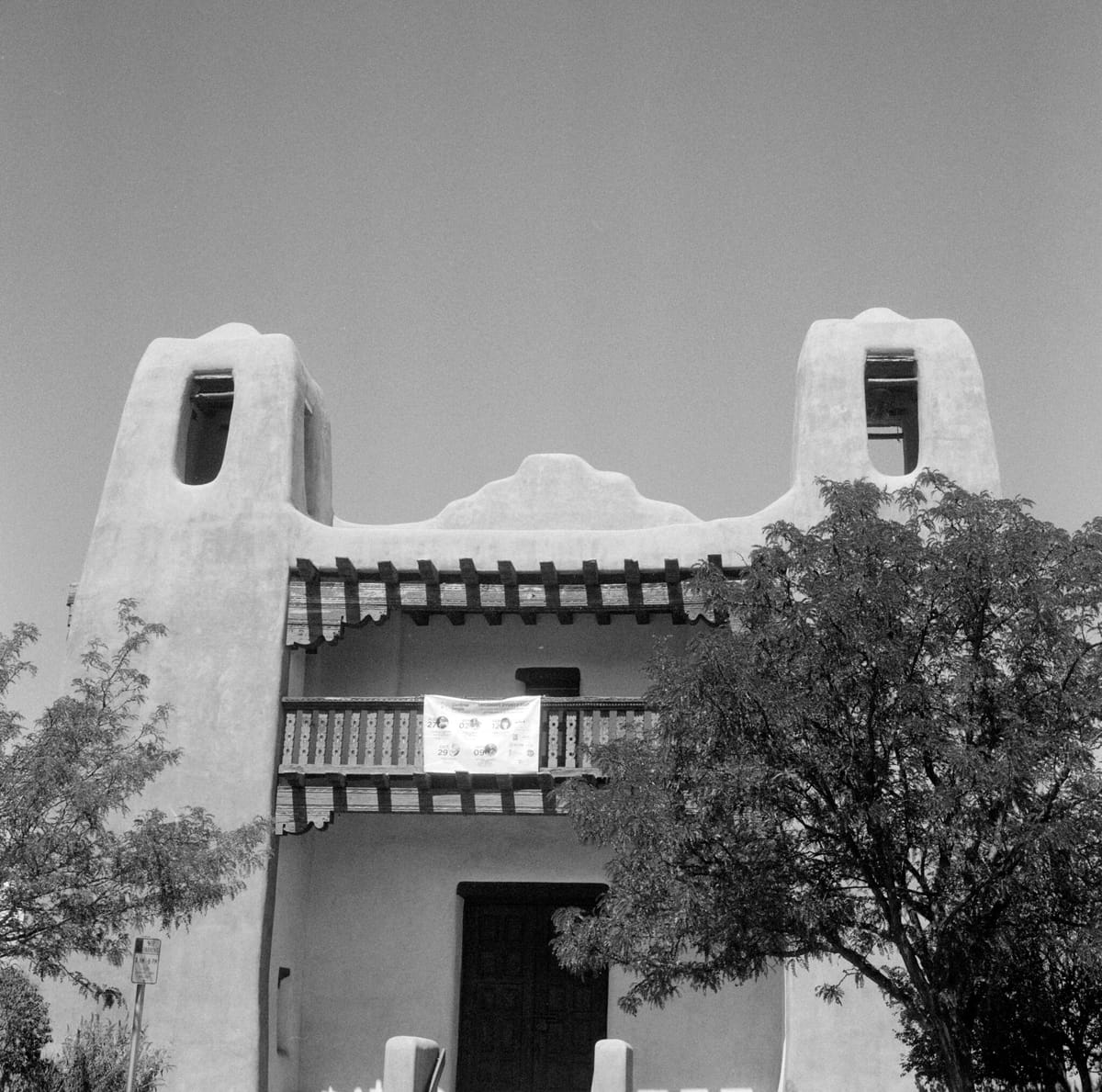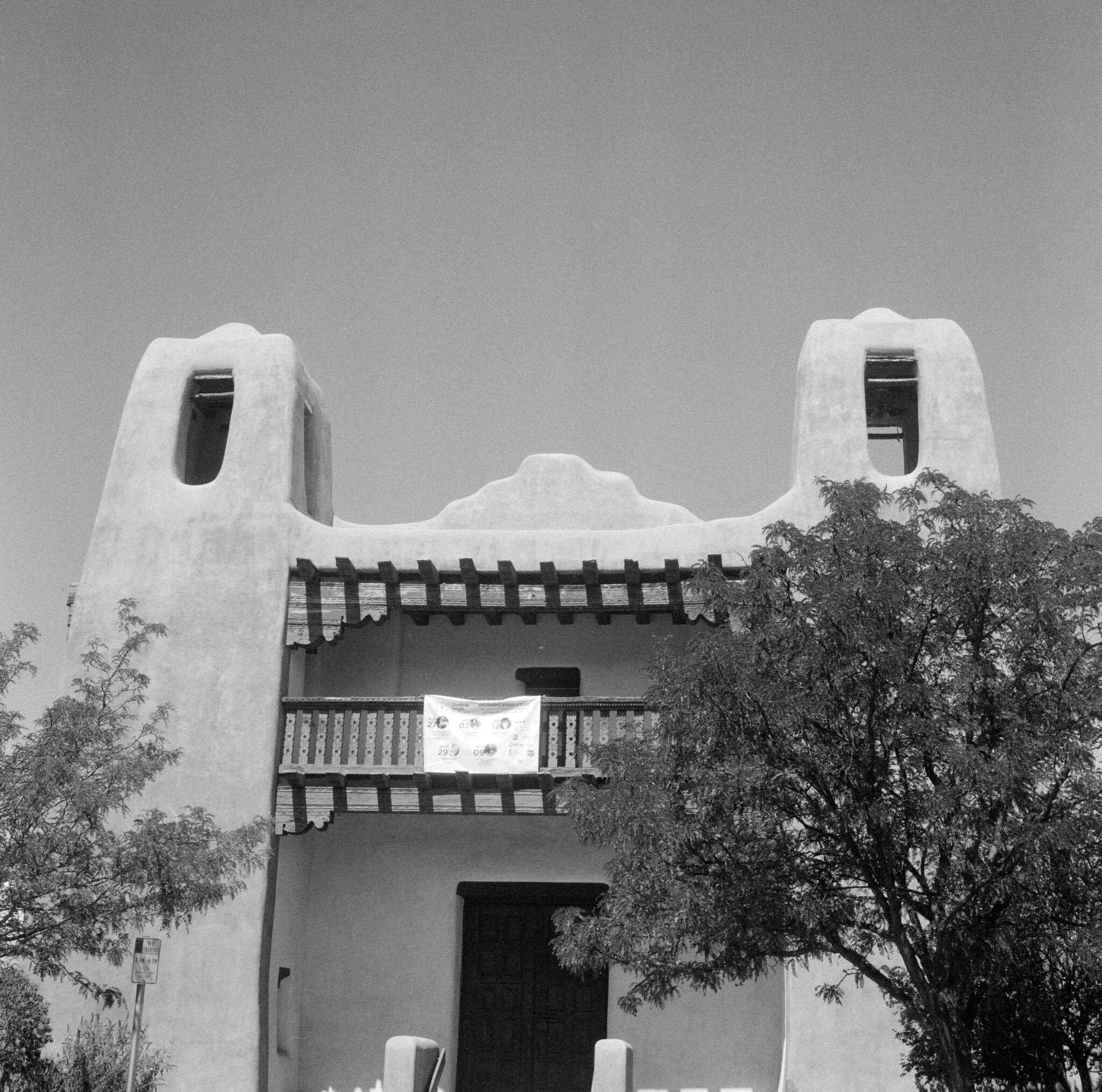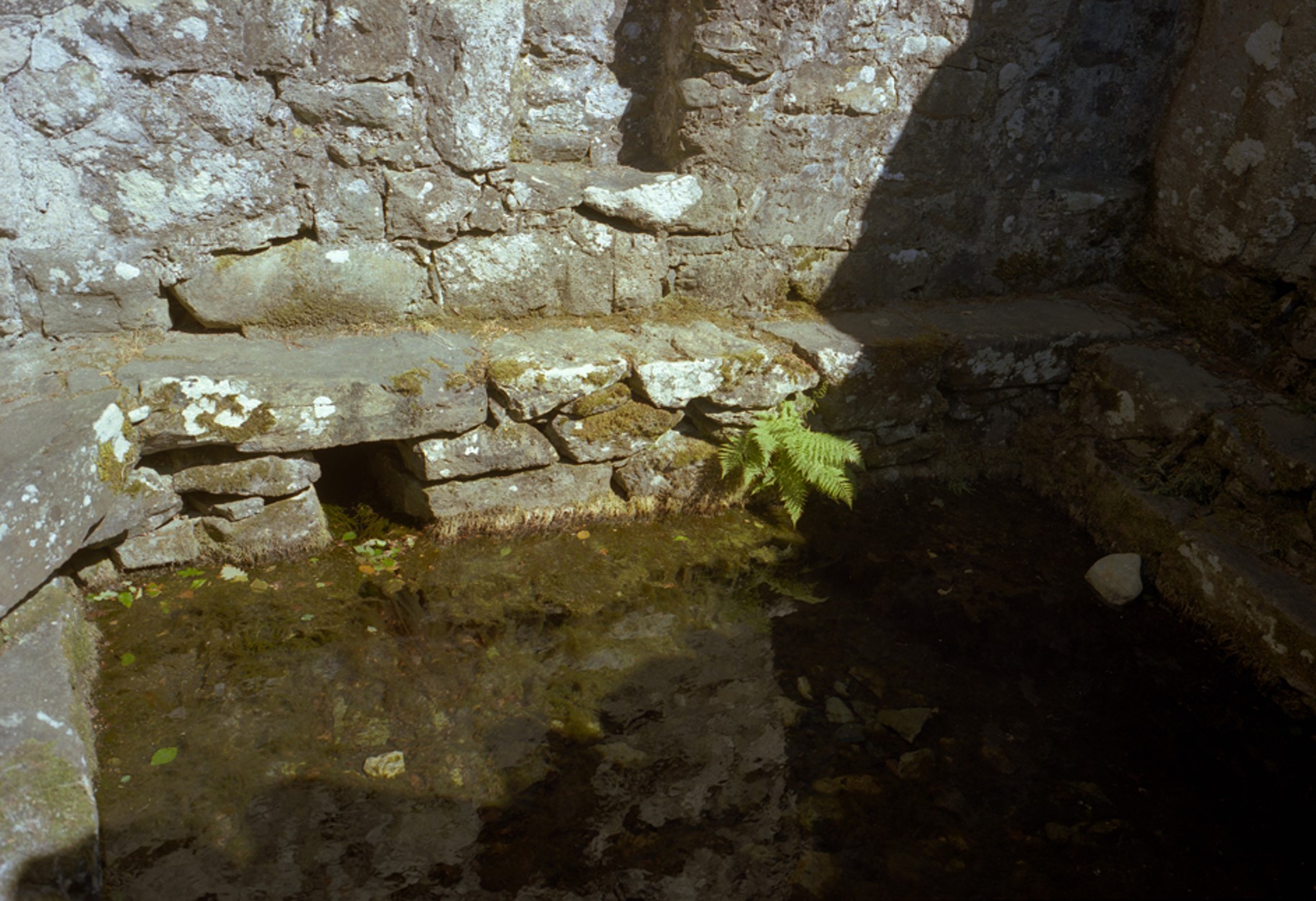Metering without a Spot Meter
Chapter 7

If you find yourself without a spot meter it is possible to make reasonable estimates that allow you to use the rules I have outlined above.
Some people carry a digital camera and use the spot meter from the digital camera. It may seem silly to carry a digital camera but if you are determined to shoot film and especially large format it can be a good compromise if you already own one. You set the camera ISO to the ISO of the film you are shooting and use the exposure parameters given. Shooting shutter priority or manual lets you set even stop shutter speeds to the same value on the film camera. A digital camera can also help visualize long night-time exposures as well which is tricky with just a light meter.
If you have a conventional average meter, then you want to estimate highlights for slide film and shadows for color negative film. Sometimes you can find a good proxy for highlights. The sky is often the brightest subject in a landscape so aim the meter at a broad patch of sky and use that as a highlight setting.
When I visited Sante Fe New Mexico I had my Yashica Mat-124G TLR loaded with Delta 3200 which I metered at ISO 800. I had my compact Sekonic meter for easy travel so I did not have access to a spot meter. A very successful strategy for those bright southwestern days was to meter the sky and overexpose by 3 stops. This placed highlights in zone VIII leaving plenty of range for the shadows.

For estimating shadows, you can aim the meter at a broad area of shadow. Move the meter around until you register the lowest value and use that.

Here is a photo where I did just that. Taken on a bright sunny day at St Cybi’s well on the Llyn Peninsula half the well was in a deep shadow. The camera was loaded with Portra 160 (color negative film so I would look to the shadows first.
This reading I took aiming the meter (Sekonic 308S) only at the shadow and got a shutter speed say at 125th sec for handheld and an aperture of f8. Now this would place the shadow in Zone V if used this setting. But I want the shadow to be blacker and not the 18% gray of Zone V. So I have to move this to Zone III or two stops darker. I can advance my meter one stop at a time and ignore the shutter speed to f11 then f16 or just know that 2 stops underexposed is f16 at 125th sec. If I want to I can also meter the wall at 125th second shutter and count out where it falls in the zone system to understand if the highlights will fit in the range of the film.
You can also consider moving if the subject allows. If there is a deep shadow you want to capture detail in it may be possible to walk right up to meter the shadow directly. The same may be true of highlights.
Finally, it is often said that the ground is often a good substitute for 18% gray and so can give a reasonable Zone V value.


